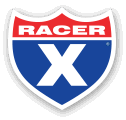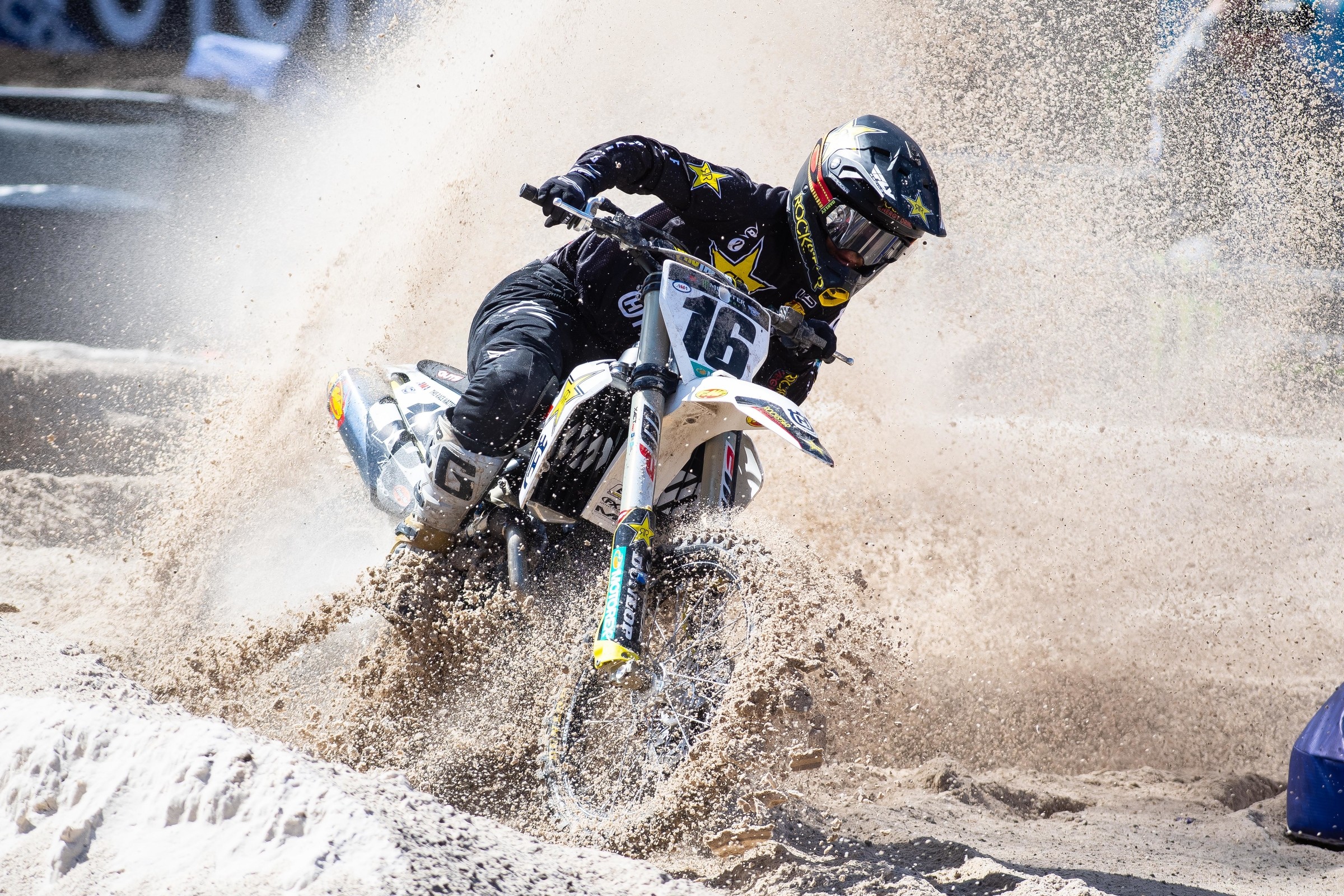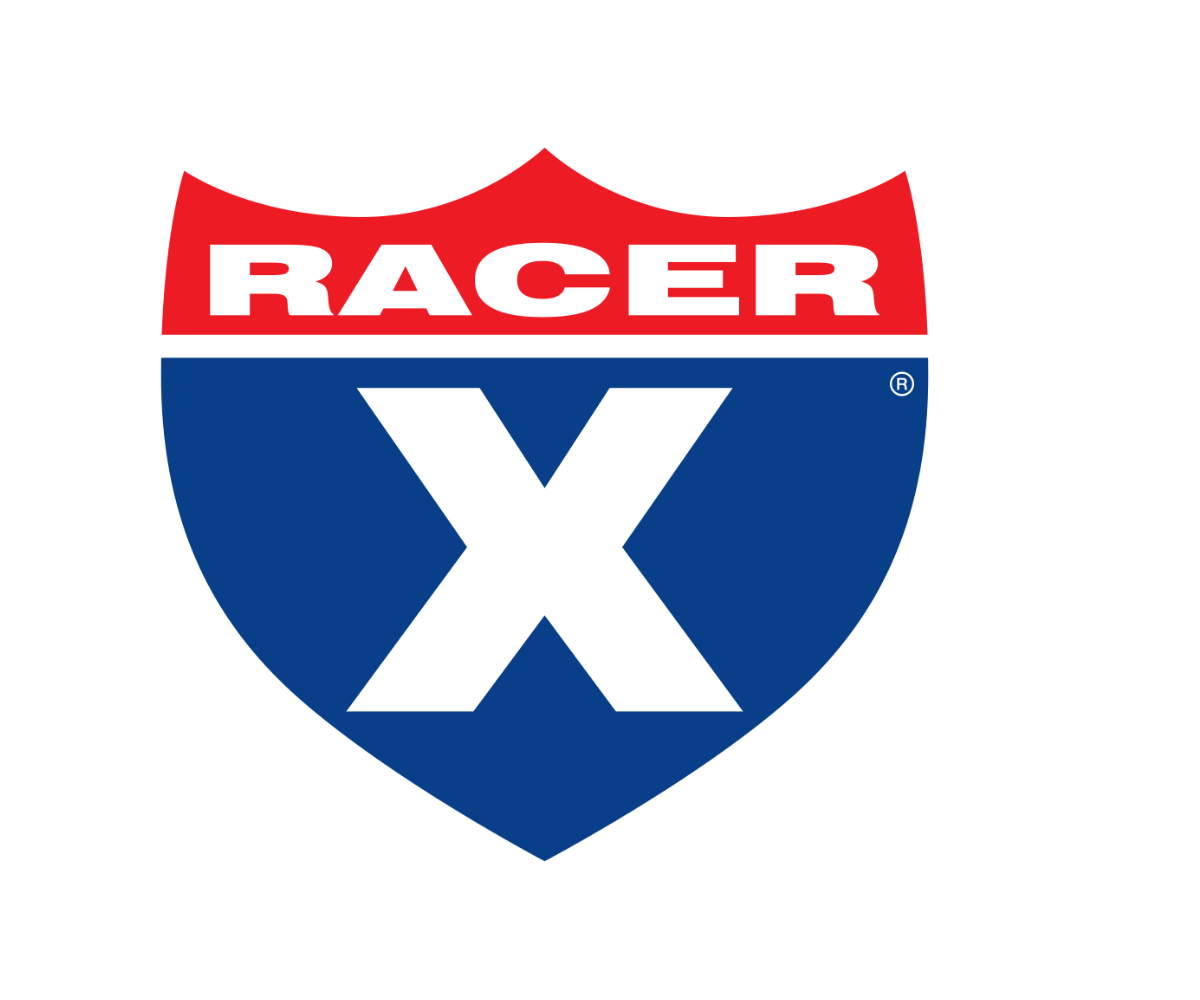Any day now, we expect to hear an announcement from Feld Entertainment that the 2020 Monster Energy AMA Supercross Series, on hold since earlier this month when the COVID-19 coronavirus threat brought the sports world to a standstill, will resume in September and October to complete what was originally planned to be a 17-race championship. Supercross traditionally runs between January and early May—at least it has ever since the AMA decided to no longer have the series overlap with outdoor motocross, which normally runs from late May to the end of August. This is a much different year than any other in the history of supercross, which began in the early 1970s, but SX races have run much later in the calendar in years past.
1973 Philadelphia Trans-AMA
Back in 1973, when the Trans-AMA Series was the biggest motocross championship in America, promoter Mike Goodwin—the man who basically invented supercross as we know it with his Superbowl of Motocross at the Los Angeles Coliseum in 1972—decided he wanted to try a race in the East as part of the Trans-AMA tour. After some serious horse-trading with the AMA, he talked them into having a weekend doubleheader at the end of September, with a Trans-AMA held on September 28 (a Friday night in the old John F. Kennedy Stadium in Philadelphia) and then another round on Sunday, September 30, at Copetown in Ontario, Canada. The two races would mark the second and third rounds of the 1973 Trans-AMA tour. The winner in Philadelphia was Dutch Maico rider Gerrit Wolsink. Here's a deeper look at the race from a few years back.
1975 Anaheim American Motocross Finals
The first Anaheim wasn't a supercross, but rather a standalone race known as the American Motocross Finals. It took place on December 13, 1975, just after the Trans-AMA tour was completed. Promoter Mike Goodwin wanted to get the top Europeans like Roger De Coster and Gerrit Wolsink to stick around and race it, but he didn't want it to be part of the Trans-AMA Series like Philly was. But the Euros went home, so Goodwin came up with a different gimmick: a run-what-you-brung Open class that allowed rising superstar Marty Smith to race his works 125cc Honda against everyone else's big bikes. He set the fastest single lap time of the night, but the bike seized on him. The overall winner in the three-moto format was Team Suzuki's Tony DiStefano, the other rising star of American motocross. There was also a high-school race won by Honda-mounted Broc Glover.
1976 Anaheim Supercross
Another standalone race, this time on December 4, 1976. The race would later be considered a supercross, but Goodwin again preferred it to be the American Motocross Finals. This time Team Honda's Marty Smith showed up on a 250 and won the race, which was historic for one reason: it was the first time a single main event was used, as Goodwin and the AMA decided to try a more spectator-friendly format that included heats and semis.
1977 Anaheim Supercross
So why was Anaheim always in the fall in the seventies? Not sure, as only the California Angels baseball team played there throughout the seventies. The NFL's Rams would move in a for a few years in 1980, but that doesn't explain the lateness of the date, other than maybe promoter Mike Goodwin wanting to do his own thing. But on November 12, 1977, Anaheim finally became a full-blown round of the AMA Supercross Championship, despite taking place FOUR MONTHS after the second-to-last round, which was at the Los Angeles Coliseum. It was also smack dab in the middle of the Trans-AMA Series. Bob Hannah had already clinched his first of three straight AMA Supercross Championships, but the race still drew a decent crowd. Hannah won over Team Honda's Jim Pomeroy and Tommy Croft.
1978 Anaheim Supercross
The November 11, 1978 Anaheim Supercross was two races in one. First, it was the last round of the '78 AMA/Toyota Supercross Series, and the winner was Team Kawasaki's Gaylon Mosier—the one and only supercross win of his career. And then there was a special $3,000 Quaker State Challenge match between each of the riders who won AMA Supercross rounds in 1978: Hannah, Mosier, Marty Tripes, and Jimmy Ellis. The concept was simple: the leader at the end of each of the six laps got $500. Hannah led the whole way.
1979 Anaheim Supercross
Anaheim was once again in mid-November (the 17th, to be exact), and once again, Hannah had clinched the AMA Supercross Championship early. But this time it made a difference, because in the four months in between the second-to-last round at L.A. and the Anaheim finale, Hannah broke his leg while water-skiing and could not race. Had the series been close, it would have really made for an interesting night! The winner ended up being Suzuki's Kent Howerton.
1980 San Diego Supercross
With the Los Angeles Rams having moved into Anaheim Stadium, the promoter Goodwin focused on Jack Murphy Stadium in San Diego for his late finale. Hannah was back but not up to speed or strength, though another Yamaha rider was. Mike Bell had already clinched the 1980 AMA Supercross Championship, and he added one last win that fall at San Diego.
1981 & 1982 San Diego Supercrosses
With the renamed Trans-USA Series fading quickly, another San Diego Supercross went off in mid-November in both '81 and '82, this time with Yamaha's Broc Glover getting popular hometown wins in both years. However, the '82 race could have been a complicated one for SX: Team Honda's Donnie Hansen, the series points leader as the break happened in July, ended up suffering a career-ending crash while in Europe preparing for the MX and Trophee des Nations. Fortunately for Hansen, he had already clinched the title. But this scenario of the champion getting hurt before the last round had happened twice now—Hannah in '79 and Hansen in '82—and that was enough for the AMA to push Goodwin to no longer hold this "Coca-Cola Finals" race so late in the off-season. Starting in 1983, there would no longer be a one-off AMA Supercross round.
And check out this video of the 1982 San Diego track that went up into the stands.
1999 FIM World Supercross in Pasadena
In November of 1999, the Rose Bowl in Pasadena got back (briefly) into the supercross business by hosting a round of the newly reformed FIM World Supercross Championship—not the FIM World Supercross of today that sidecars with Monster Energy AMA Supercross. This race had to be run fairly early due to noise regulations in Pasadena, and it ended up being run in a giant, almost-empty stadium. No, they weren't social distancing rules back then, the fans just didn't show up. The ones who did saw Travis Pastrana win the 125 class—his first win as a pro—and Team Honda's Ezra Lusk top the 250 class.
2002
The years of 2001 and 2002 were tumultuous for AMA Supercross. First, AMA Pro Racing, the for-profit subsidiary of the nonprofit American Motorcyclist Association, decided to put the organization and production of the series out to bid. This did not make Clear Channel, the promoter at the time, very happy. A Chicago-based music and events promoter named Jam Sports put in a bid, and AMA Pro Racing sold the rights to them. This infuriated Clear Channel. They responded by calling the FIM (Fédération Internationale de Motocyclisme, or International Motorcycling Federation) and asking if they would sanction their series, because they had no intention of getting out of the business just because the AMA found a new dance partner. The FIM said yes, and that in turn infuriated the AMA. It all ended up in a lawsuit and a much different and boring story than you probably care to know.
The collateral damage/opportunities of the whole deal led to the the FIM getting involved with supercross—a discipline of racing they never could get a grasp on—and Clear Channel would finally get to try doing some races overseas. The U.S.-based teams were not thrilled with the prospect of racing abroad, as their budgets almost entirely come from the domestic market. They were even less thrilled when it was announced that the first two rounds of what was now a combined series—THQ AMA Supercross, as well as the FIM THQ World Supercross GP Championship—would take place in the early weeks of December 2002. Clear Channel had to do a lot of lobbying to get everyone to go, and they did not quite get everyone—Team Honda stayed home, which meant the defending champion Ricky Carmichael would not be racing the early rounds in Europe. He and the team decided to focus on the AMA parts of the series and forego the FIM sidecar version. (Yes, there would be two different series to keep track of, with separate points, and two different champions if it worked out that way.)
Finally, on December 7, 2002, the starting gate dropped on the first FIM World Supercross race, in the Palais Expo in Geneva, Switzerland, and the winner was the U.S.-based Frenchman David Vuillemin. He topped his Yamaha teammate Tim Ferry and KTM rider Grant Langston, a South African also based in the U.S.
One week later, on December 14, 2002, the series set up in the Gelredome in Arnhem, Holland. Another foreign-born U.S.-based Yamaha factory rider, Australia's Chad Reed, won the main event, with Vuillemin second and Factory Connection Honda's Mike LaRocco third.
And here's a footnote in history: these were the only two actual FIM/AMA Supercross races in which Jeremy McGrath raced a KTM, which wasn't quite the same as riding for KTM would be now. He struggled on the bike and finished sixth and seventh, respectively. Then he went home to California and retired.
2003
For 2004 (well, 2003, actually) the international opener would be moved to Seville, Spain, and count in the 2004 THQ World Supercross GP, and this time Honda was joining the trip. But Carmichael, the series champion, again would be absent, this time due to a knee injury that would knock him out of the entire SX season and snap his title winning streak at three. Carmichael not going started something of a domino effect, as neither Team Yamaha nor Factory Connection Honda (LaRocco and now Kevin Windham) wanted to go.
Spain was supposed to be mild and warm way down in Seville on December 6, but instead it turned out to be a weeklong "rain on the plain in Spain" deal. That led to one of the muddiest, nastiest SX races ever, and a surprise winner: Motoworld Suzuki rider Darryl Hurley of New Zealand, followed by KTM's Grant Langston and Moto XXX rider Tyler Evans.
The following weekend it was back to Arnhem, Holland, which fortunately had a roof, as it was very cold in northwestern Europe at that time of the year. It was in the Gelredome that Honda's Ernesto Fonseca would score his one and only premier-class SX win.
A few years ago we summed up the whole misadventure of those December races in Europe this way: "The real problem here was not the mud or the rain, but the confusion to come in having a THQ World Supercross GP Champion—racing the international races was mandatory to count for that title—and an AMA Supercross Champion. Heath Voss would be named the 2004 World Champion, despite the fact that he was only seventh in points once the AMA rounds were added. And the AMA Champion? Yamaha's Chad Reed."
2004
Finally, in December 2004, Ricky Carmichael decided he was going to do the FIM rounds. He was just getting back to SX after missing the previous season, and he was also switching teams, from Honda to Suzuki. He decided to race in December—in part because Clear Channel decided to hold the races in Canada instead of Europe, which made it much easier and cheaper on everyone. But not everyone went. The "perfect storm" was brewing in the States, with newly crowned Chad Reed ready to defend his title against not only Carmichael but the imminent arrival of James Stewart to the 250 class, as well as the returning Kevin Windham and action-sports superstars Jeremy McGrath (back for fun) and Travis Pastrana (always for fun). But none of those riders went to Canada. The races were held in Toronto and Vancouver. Both were easily won by RC on his RM250.
And in May 2005, Carmichael achieved something no one else had done, unifying the AMA and FIM title belts. He also showed his primary competition—Reed and Stewart—that going to Canada for warm-up races wasn't a bad idea after all.
2005
Prior to the 2006 season in America, everyone got on board for the races in Canada, which started on December 3, 2005, at the Rogers Centre. A big reason was the fact that the title rivals—Carmichael, Stewart, and Reed—were all switching their SX bikes from two-strokes to four-strokes at the same time. Racing the FIM rounds in Canada like Carmichael had done the year before would be a great shakedown for the still-separated AMA championship, which counted most. Stewart, now wearing his new #7 rather than his trademark #259, won a thrilling battle over Carmichael, with Reed a distant third-place in the opening round of what was by now called the 2005-06 FIM Amp'd Mobile World Supercross GP Series.
One week later in Vancouver, the top three were the same: Stewart, Carmichael, Reed. Wrote Cycle News' Kit Palmer, "The only thing that could have made the opening two rounds of the Amp'd Mobile World Supercross GP Series in Canada a little sweeter for James Stewart would have been if the Canadian rounds also offered points towards the AMA Series, which gets underway in a few short weeks in Anaheim, California."
And in May 2006, when all was said and done, the title belt had been split again: Carmichael took the AMA title (his fifth and final SX championship) and Stewart wore the FIM crown.
2006
Once again, the December races were slotted for Canada, but this time the 2006 doubleheader would count toward the 2007 season, which was also going to be Carmichael's farewell tour—he would only do a limited amount of races before ending his supercross career in Orlando in March. But he still wanted to go to Canada and prep for that farewell tour. But all of that was overshadowed bit by an epic duel between Stewart and Reed. They ended up touching wheels before the finish line with three laps to go, causing Stewart to fly off the side of the finish line double-jump. When he tried to get back on the track, he did so without looking, and he was promptly T-boned by Factory Connection Honda's Travis Preston, who didn’t see him until he was already up in the air. Stewart would get up to finish third while Chad Reed bested Carmichael for the win. Afterward, Stewart would be fined $4,000 by the FIM for reckless riding.
The following weekend's Vancouver race wasn't nearly as exciting, as Reed had an off night and Stewart was hampered by the ankle he injured in his collision with Preston the previous Saturday night. He would finish third. The winner, in a swan song of sorts, was Ricky Carmichael. He would later depart the series as planned, and James Stewart would unify both the AMA and FIM Supercross titles.
The December '06 Vancouver SX would mark the last of the AMA/FIM December races in Canada or Europe or anywhere else. For the 2008 season, the two series would combine points and make the one international round in Canada count for AMA points as well as FIM, thus unifying the championship back down to one single #1 plate.
2020
Now we're in the midst of this global pandemic and an almost total shutdown of everyday life, let alone sports. The 2020 Monster Energy AMA Supercross Championship is on hold and will almost certainly start again in the fall, which will mean a return to the back end of the calendar in order to complete the 17-round championship. Where? When? Stay tuned.














